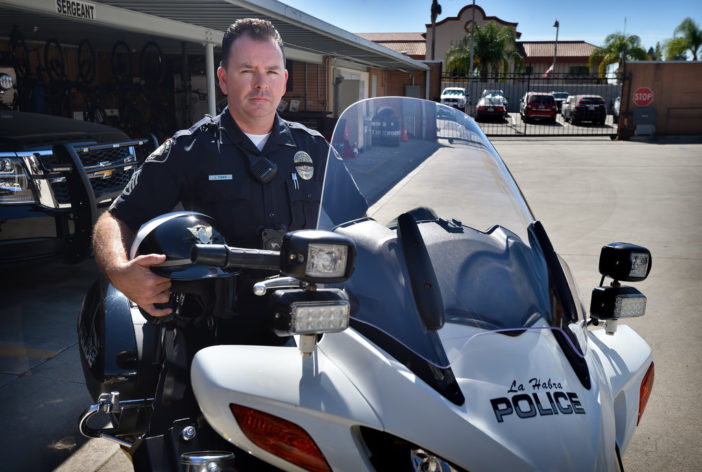Most of us forget, at least momentarily, the finer points of what we learned in our driver’s education classes, or what we studied for our driver’s test.
The moment of truth comes and you really don’t know who has the right of way. Maybe the other driver doesn’t know either. La Habra Police Department’s Sergeant Jim Tigner can help you avoid this comedy of errors.
Question: I get confused when I’m making a U-turn and there’s a car making a right turn at the same time. Who has the right of way?
Tigner: Assuming the U-turn a driver is making is legal, the driver making the U-turn has the right-of-way on that roadway. A driver intending to make a right turn at an intersection and facing a red light MUST yield to any vehicles and pedestrians on the road onto which they’re turning.
We often see the driver approach the intersection on a red light, intending to turn right. The driver doesn’t fully stop behind the limit line to adequately assess traffic already in the intersection and on the roadway to the right. In other words, they just ‘slow and go’ so to speak, and end up in conflict with the car making the U-turn.
CVC 21453.
(b) Except when a sign is in place prohibiting a turn, a driver, after stopping as required by subdivision (a), facing a steady circular red signal, may turn right, or turn left from a one-way street onto a one-way street. A driver making that turn shall yield the right-of-way to pedestrians lawfully within an adjacent crosswalk and to any vehicle that has approached or is approaching so closely as to constitute an immediate hazard to the driver, and shall continue to yield the right-of-way to that vehicle until the driver can proceed with reasonable safety.
And regarding right turns and positioning, a good reminder is that both the approach and the turn must be made as close to the curb as is practical.
Drivers are not supposed to make a right turn and go directly into the #1 lane of travel – closest to the middle of the road. They are supposed to stay in that far right position of the road through the turn and then, when safe, make a lawful lane change toward the middle lanes if so desired.
VC 22100.
Except as provided in Section 22100.5 or 22101, the driver of any vehicle intending to turn upon a highway shall do so as follows:
(a) Right Turns. Both the approach for a right-hand turn and a right-hand turn shall be made as close as practicable to the right-hand curb or edge of the roadway except:
(1) Upon a highway having three marked lanes for traffic moving in one direction that terminates at an intersecting highway accommodating traffic in both directions, the driver of a vehicle in the middle lane may turn right into any lane lawfully available to traffic moving in that direction upon the roadway being entered.
(2) If a right-hand turn is made from a one-way highway at an intersection, a driver shall approach the turn as provided in this subdivision and shall complete the turn in any lane lawfully available to traffic moving in that direction upon the roadway being entered.
(3) Upon a highway having an additional lane or lanes marked for a right turn by appropriate signs or markings, the driver of a vehicle may turn right from any lane designated and marked for that turning movement.
 Behind the Badge
Behind the Badge



